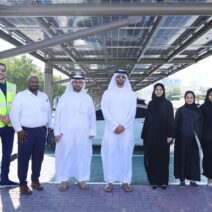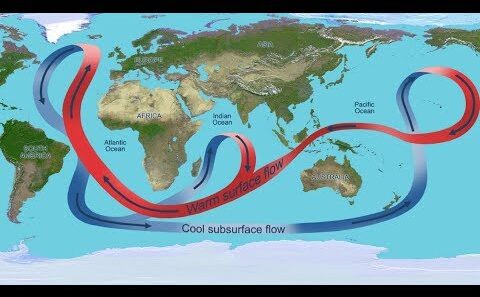As we stand at the precipice of environmental catastrophe, the question looms large: Can CO2 overload be reversed by human innovation? This query is not merely rhetorical; it serves as a portal into the complexities of our relationship with carbon dioxide, the most prevalent greenhouse gas. Human activity has inexorably driven CO2 concentrations to unprecedented levels, but it is equally within our powers to engineer veritable solutions. Thus, let us traverse this intricate landscape, exploring the interplay between anthropogenic emissions, climate change, and the possibility of innovative reparative measures.
To understand the magnitude of the challenge, one must first consider the current state of atmospheric CO2 levels. Data paints a dismal portrait; levels have surged past 400 parts per million (ppm), a stark departure from pre-industrial levels of approximately 280 ppm. This uptick correlates with a cacophony of consequences, including rising global temperatures, erratic weather patterns, and escalating sea levels. In essence, the planet’s capacity to absorb carbon has been overwhelmed, akin to a sponge that can no longer soak up any additional water. Hence, the question emerges: Can innovation provide the necessary means to redress this imbalance?
Pioneering ideas have surfaced that offer glimmers of hope in mitigating CO2 concentrations. Carbon capture and storage (CCS) technology has garnered significant attention. This innovative approach involves siphoning off CO2 emissions at their source—be it power plants or industrial facilities—and sequestering them underground or using them in various applications. The efficacy of CCS hinges on its implementation on a global scale, a feat that necessitates substantial investment and infrastructure development. Yet, if executed properly, it possesses the potential to trap millions of tons of CO2 that would otherwise exacerbate the greenhouse effect.
Moreover, the concept of direct air capture (DAC) has emerged, representing a stride toward innovative climate solutions. This technology employs machines that actively extract CO2 from the ambient atmosphere. Once captured, this gas can either be repurposed for industrial utilization or securely stored. While DAC is still nascent, scaling it up could offer a formidable strategy for addressing atmospheric CO2 imbalance. Notably, these methods introduce a novel perspective: that removing CO2 is not merely a reactionary measure, but a proactive endeavor to secure a sustainable future.
However, one must not overlook the role of nature itself in curbing CO2 levels. Reforestation and afforestation initiatives have shown significant promise. Trees naturally absorb CO2 during photosynthesis, thus serving as organic carbon sinks. By restoring deforested lands and planting new forests, humanity can harness the power of nature to counteract emissions. This approach is not without challenges, as land availability and biodiversity considerations must be navigated judiciously. Nevertheless, the potential for nature-based solutions remains an intrinsic component of our innovative arsenal.
The agricultural sector also presents avenues for innovation to alleviate the CO2 burden. Implementing regenerative agricultural practices, such as no-till farming, crop rotation, and cover cropping, can enhance soil carbon sequestration. By enriching soil health and promoting biodiversity, these methodologies not only yield healthier crops but also assist in drawing down atmospheric CO2. Furthermore, precision agriculture techniques can significantly reduce unnecessary emissions due to optimized resource usage, demonstrating that sustainability can be synergistic with productivity.
Nevertheless, innovation cannot solely reside in technological or agricultural realms; socio-economic frameworks must evolve in tandem. Policymakers play a pivotal role in this transformation. By instituting carbon pricing or incentives for low-carbon technologies, governments can stimulate innovation while simultaneously steering industries towards more sustainable practices. Engagement at the community level is equally crucial. Grassroots initiatives have the power to mobilize change by fostering local solutions, ranging from energy efficiency programs to waste reduction efforts. A multi-faceted approach is essential, uniting technology, economics, and local engagement as we confront this monumental challenge.
In our quest for solutions, it is essential to maintain a critical perspective on the role of technological innovation. While advancements in technology present exciting prospects, they should not serve as a panacea. The notion of geoengineering, for instance, raises ethical and ecological queries that demand careful consideration. Manipulating atmospheric conditions through techniques such as solar radiation management could yield unforeseen repercussions. Innovation is a double-edged sword; wielded with wisdom, it could lead to restoration, but misapplied, it risks exacerbating existing dilemmas.
The path to reversing CO2 overload necessitates a paradigm shift in how we perceive and engage with our environment. By fostering an ethos of sustainability and innovation, we can create a cohesive framework that marries human ingenuity with ecological integrity. It is not merely a question of whether we have the capability to innovate; rather, it is imperative that we motivate collective action. History reveals that humanity has the remarkable ability to adapt and evolve in the face of adversity. Indeed, can we rise to this moment and ensure a habitable world for future generations?
In conclusion, the prospects for reversing CO2 overload through human innovation are tantalizing yet fraught with complexity. While an array of strategies—from technological breakthroughs to nature-based solutions—illuminates potential pathways, the challenge encompasses not only scientific advancements but also ethical considerations and collective engagement. As we embark on this journey, we must remain vigilant, inquisitive, and tenacious in our endeavors. The question remains: Are we ready to redefine our relationship with carbon and embark on a transformative path to sustainability?







